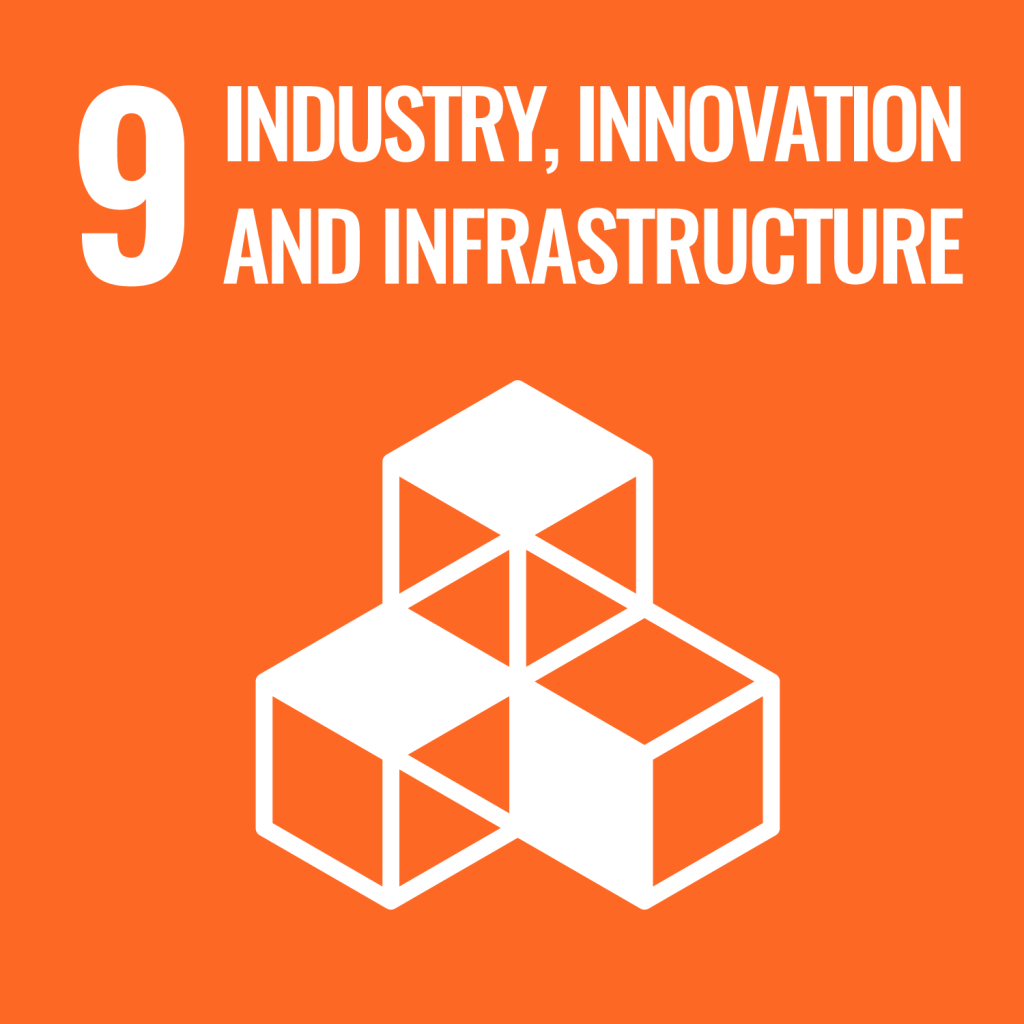Coconut water, one of the country’s top exports, is a...
Read More
Announcements


Build resilient infrastructure, promote inclusive and sustainable industrialization and foster innovation.
Coconut water, one of the country’s top exports, is a...
Read MoreThomasian researchers bagged the top prizes in the Department of...
Read MoreAtty. Gay Christine Cortes-Lopez, CPA, JD, LLM, an alumna of...
Read MoreAssoc. Prof. John Manuel R. Kliatchko, PhD, academic staff of...
Read MoreGraduate-degree scholars of the University of Santo Tomas Graduate School...
Read MoreProf. Dr. Karen S. Santiago, former Chair of the Department...
Read MoreOn June 23, 2025, the University of Santo Tomas officially...
Read MoreThree Department of Biological Sciences faculty members were elected to...
Read MoreA trio of BS-Biochemistry Students received the “Ajinomoto Philippines Award”...
Read MoreThird-year students from the University of Santo Tomas College of...
Read MoreSDG 9 – Building Bridges to Innovation: UST’s Commitment to Industry and Infrastructure
The University of Santo Tomas (UST) has long been a beacon of academic excellence and institutional resilience. Under the leadership of the Very Rev. Fr. Richard G. Ang, O.P., Ph.D., UST has expanded its footprint and fortified its role as a hub for innovation, education, and infrastructure development. This narrative report highlights UST’s alignment with Sustainable Development Goal (SDG) 9: Industry, Innovation, and Infrastructure, as demonstrated by its strategic initiatives, interdisciplinary collaborations, and investments in cutting-edge facilities.
UST has a history of engaging with local communities through outreach programs that provide educational resources and support to impoverished areas. These programs often include workshops, seminars, and direct assistance to improve participants’ socio-economic conditions.
1.1. Tulong Tomasino Relief Operations
2.1. New Campuses: UST Santa Rosa and UST General Santos UST’s expansion to Santa Rosa, Laguna, and General Santos, Mindanao underscores its commitment to making quality education accessible while driving regional development.
2.1.1. UST Santa Rosa
Envisioned as a technological and innovation hub, Santa Rosa features state-of-the-art facilities like the Tony Tan Caktiong Innovation Center, which serves as a center for innovation, food product development, and startups.
The forthcoming Dr. William T. Belo Interdisciplinary Research Institute will bolster UST’s capacity for cutting-edge research, particularly in food technology and engineering fields.
2.1.2. UST General Santos
The 82-hectare campus focuses on agri-tech education, addressing Mindanao’s agricultural needs while promoting sustainable food production and rural development practices.
2.1.3. Henry Sy Sr. Hall: Medical Innovation
The soon-to-be-inaugurated Henry Sy Sr. Hall is designed to redefine medical education at the Manila campus. Equipped with simulated emergency rooms, surgical suites, and ICUs, it reflects UST’s commitment to healthcare innovation and state-of-the-art learning environments.
UST has made substantial strides in enhancing its research ecosystem, in line with Fr. Ang’s vision to position UST as one of the rising research universities in the Asia Pacific.
3.1. Research Productivity
2022 marked UST’s most productive research year, with 354 Scopus-indexed publications and notable contributions from the UST Hospital. Recognized as a top research-intensive university in the Philippines, UST excels in medical research, which accounts for nearly 500 publications over the past five years.
3.2. Interdisciplinary Collaboration
UST fosters partnerships across disciplines, emphasizing the complementarity of natural sciences and humanities. This synergy is critical for solving real-world problems, such as addressing energy sustainability through innovative projects like the Syngas Refilling Apparatus for Cooking Applications, which incorporates biochar and bio-oil production.
UST’s partnerships with industry leaders and alumni are key drivers of innovation and infrastructure development.
4.1. Industry-Academe Collaboration
Facilities like the Tony Tan Caktiong Innovation Center reflect the success of collaborations with industry experts, providing spaces for startups and research commercialization.
Plans for the Dr. Ricardo S. Po Sr. Integrated Innovation and Research Laboratories in Mindanao aim to bridge gaps between research and practical application in agriculture and technology.
4.2. Alumni Engagement
UST’s ability to harness alumni support, such as the contributions from industry icons like Tony Tan Caktiong and Dr. William T. Belo, ensures sustainable growth and the realization of long-term projects.
UST’s response to the digital age is a testament to its resilience and adaptability.
5.1. Hybrid Learning and IT Systems
The transition to Canvas and the revamping of the MyUSTe portal illustrate how UST leverages technology to enhance educational delivery.
By maintaining hybrid learning models, UST maximizes the benefits of both virtual and in-person instruction.
5.2. Research-Based Solutions
Innovative projects like the Syngas Refilling Apparatus demonstrate UST’s ability to develop sustainable energy solutions that align with both industry needs and environmental goals.
UST’s infrastructure initiatives are deeply rooted in the principle of sustainability. By expanding strategically to underserved regions like Mindanao and developing campuses that cater to regional needs, UST exemplifies its dedication to inclusive growth and environmental responsibility.
6.1. UST General Santos: Agricultural Focus
With an emphasis on agri-tech education, the General Santos campus supports sustainable farming practices and the development of rural industries.
6.2. Green Infrastructure
UST’s designs for new facilities incorporate eco-friendly practices, ensuring that innovation does not come at the cost of environmental sustainability.
AGROTIS Navigation System
Thomasian researchers invent automated rice tractor machine to address rice farm labor shortage.